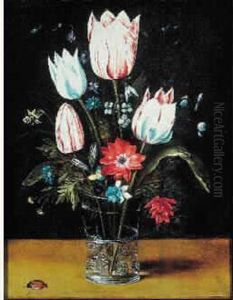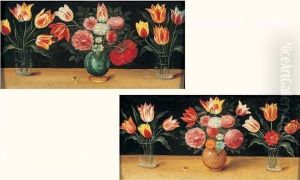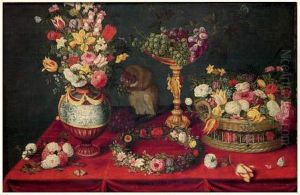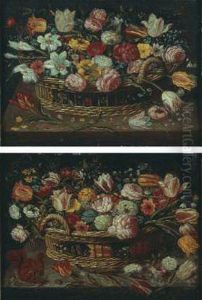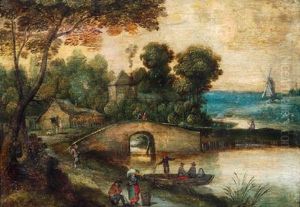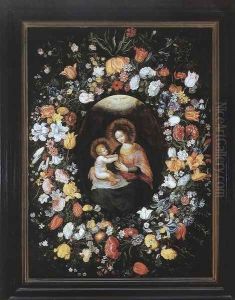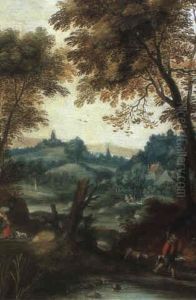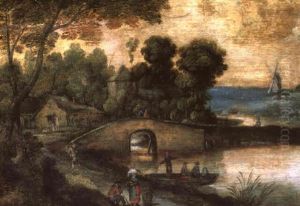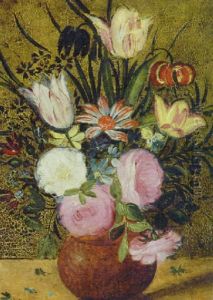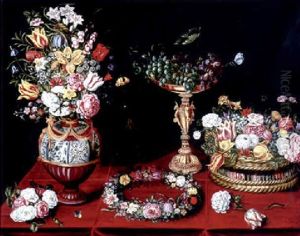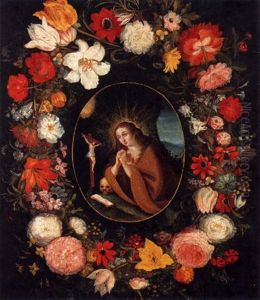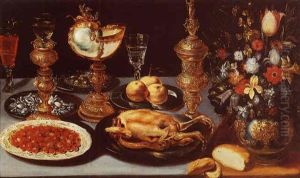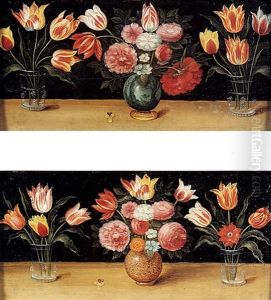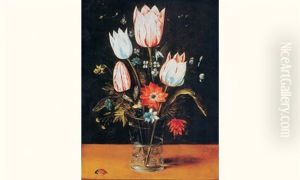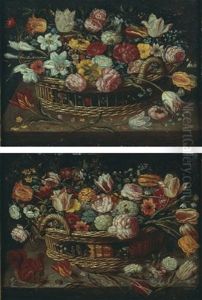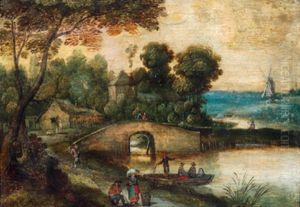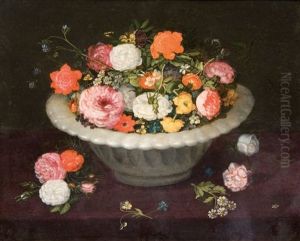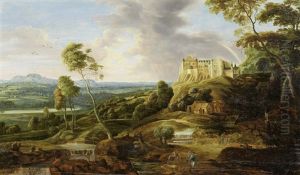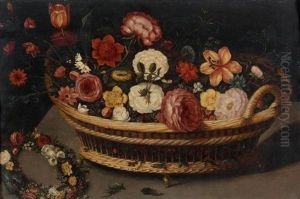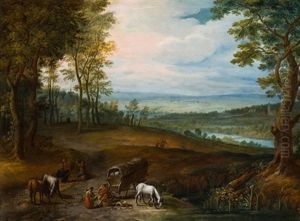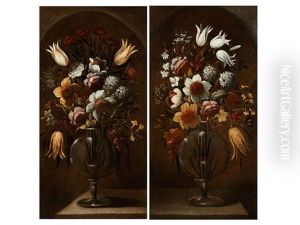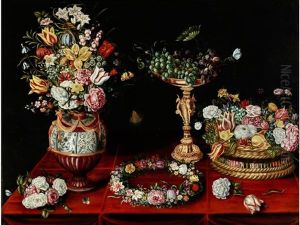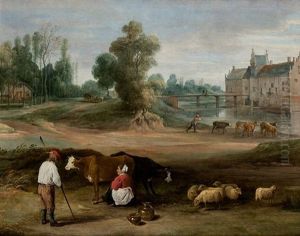Ambrosius Brueghel Paintings
Ambrosius Brueghel was a notable Flemish painter born in 1617 in Antwerp, a city renowned for its vibrant artistic community during the 17th century. He was part of the famous Brueghel family, a dynasty of artists that left a significant mark on the Northern Renaissance and Baroque art. Ambrosius was the son of Jan Brueghel the Elder, a distinguished painter in his own right, and the grandson of Pieter Bruegel the Elder, who was a pivotal figure in the Flemish Renaissance. This lineage placed Ambrosius in a unique position, as he was born into a family with a rich artistic heritage and high expectations.
Ambrosius Brueghel specialized in flower still lifes, a genre that was highly popular among the affluent collectors of the time. His works are characterized by their meticulous attention to detail, vibrant colors, and the ability to convey the texture and delicacy of the flowers he painted. He was not merely content with replicating the physical appearance of his subjects but sought to infuse his compositions with a sense of life and vitality that spoke to the viewer. This approach allowed him to carve out a distinct niche for himself within the Brueghel family's artistic legacy.
Throughout his career, Brueghel enjoyed considerable success and recognition. His paintings were sought after by collectors and art lovers, not only in the Low Countries but also across Europe. Despite the shadow cast by the towering figures of his father and grandfather, Ambrosius managed to develop a personal style that, while influenced by his family's artistic traditions, also showcased his own innovations and interpretations of the natural world.
Ambrosius Brueghel passed away in 1675 in Antwerp. Though perhaps not as widely known as some of his ancestors today, his contributions to the art of still life and flower painting continue to be appreciated by art historians and collectors. His works are held in several prestigious collections and museums around the world, serving as a testament to his skill and the enduring appeal of the Brueghel family's artistic legacy.
